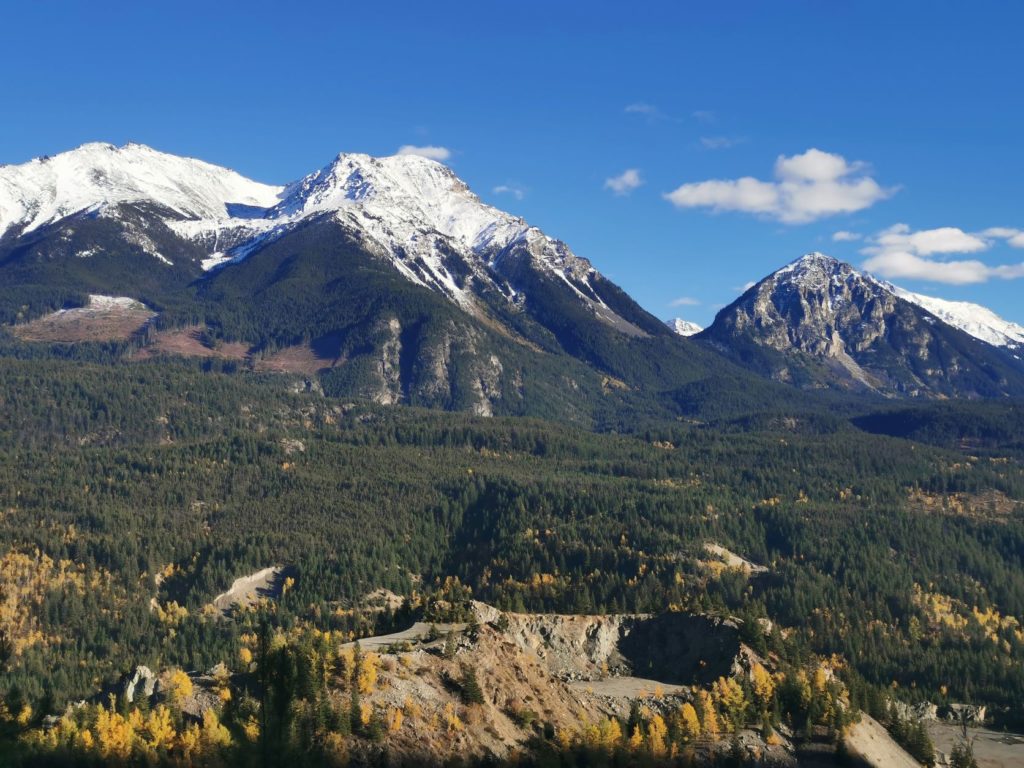The Chilcotin Ark: The Shangri-La of North America

Summary: The hidden valley of Shangri-La has given rise to many stories about this earthly paradise, but North America has its own Shangri-La, the Chilcotin Ark. The Chilcotin Ark is an area of unparalleled biodiversity, home to endangered species and unique ecosystems. Find out what makes the Chilcotin Ark so special and how you can play your part in conservation as a wilderness steward.
Shangri-La is a mystical, mythical hidden valley, high in the mountains in deepest Tibet, an earthly paradise, where all is harmonious, the balance of life and death, plants and animals, rivers and winds. The people who live at Shangri-La are said to be almost immortal, living for hundreds of years, barely aging. Ancient Tibetan scriptures refer to a similar place, a sacred, idyllic place.
There is also a mystical Shangri-La valley hidden in the western mountains of North America, but this Shangri-La is a real place, not a legend. It is located on the Ring of Fire, a 40,000 km line of 450 volcanoes, some dormant, some active, 75% of the world’s volcanoes. Along the Ring of Fire, the earth shakes regularly and the earth is rich with minerals from jade to gold, iron to salt. Lava, the pulsing blood of this planet, spewed from the cones and ashes darkened the sky, covering the earth with the most fertile layer of minerals, shaping the landscape. Destructive and rejuvenating at the same time, these dynamics have been witnessed by residing humans and wildlife for thousands of years.
Just like we have our own energy centres or chakras, the earth has hers. The energy currents spanning the earth are known as the earth’s veins or “Ley lines”. Where these Ley lines intersect points of high energy occur and it is said that the high vibrations can be sensed by any organism – if you pay attention. Along these energy lines sacred places have been recognized by humans since the beginning of mankind. Places believed to be intimately connected with the supernatural forces, having a special exalted character and thus treated with respect and honour. In the Shangri-La of North America, the earth hums with the energy of these lines.
Before animals evolved onto the land, the landscape was there. It is referred to as the first gift. The mountains have their own characteristics. That may include the origin of a rushing river, emerging from a thousand creeks, always flowing, never the same as before. These mountains were shaped by the movements of restless tectonic plates, explosive liquid mineral rock and glaciers, water that has been frozen for thousands of years. These too make up the Shangri-La of North America.
The real Shangri-La of North America has a significant geographical position. Cultural values shape a place of myths and legends. A place of enlightenment and wisdom. Abundant food sources like wild potatoes, onions and pine nuts.
We live in this mystical place. A hidden valley surrounded by high mountains. A centre of high energy where the rugged Coastal Mountains and the interior Chilcotin Mountains meet. Where plateaus, glaciers, lakes and the ocean are not far. Several guardian mountains surround the valley, allowing access only for those who brave the trail, for only a limited time each year. Nine months a year the mountain passes are covered in metres of snow, only July, August and September allow access to the hidden treasure. If not frozen or low, the rivers are impossible to cross.
13 of the 16 biogeoclimatic zones of British Columbia are found in the real Shangri-La. The high biodiversity allows this place to be home to a huge diversity of wildlife from mountain goats, bald eagles and grizzly bears to beavers, California Bighorn sheep and mule deer – a refuge for wildlife in times of climate change. Animals in the flat country have to move hundreds of miles north each decade to escape rising temperatures and changing environments. Animals in North America’s Shangri-La have to move just a few feet higher in elevation to gain the same benefit.
Although the vegetation period is short, fruit trees, shrubs and wild berries grow throughout the valley, feasted on by grizzly and black bears. Pine trees provide 15 diverse food products for the people and animals that live here. Soopallalie berries, thimbleberries, Saskatoon berries, wild potatoes, wild onions and mountain sorrel play an important cultural role and provide vital nutrients. Glaciers are a source of turquoise lakes, giving name to the Tsilhqot’in, the people of the blue water.
Mineral water springs and salt licks are another gift from mother earth. Mountain goats, mule deer and California Bighorn sheep will walk 100s of miles to access these. 50 million year old fossil walls are found at 6000 ft elevation. When these animals were alive, they lived on the ocean bed, evidence of the changing nature of the earth’s crust.
Mountain water from the Chilcotin Ark is called “Liquid Luck” . It flows along the ancient path of gravity, the alpine through volcanic mountains to the fertile valleys below, frozen in the winter, rushing with sediment and rocks from the mountains in the spring, becoming pure and clear in the summer and catching fresh snowflakes in the fall. This is the water flowing in the creeks and rivers coming from the rugged mountains or the rolling slopes, flowing through alpine meadows, whitebark pine and fir stands. We drink it like champagne to celebrate our successes and appreciation. It feeds the birches and we turn it into birch syrup. What we eat and drink becomes part of us and so does our “liquid luck”. Who journeys in the valley can taste and sense the water that gives life to all the organisms in the valley.
The Chilcotin Ark is the name of North America’s real Shangri-La, where the earth’s energy bubbles close to the surface, where rich volcanic soil creates the perfect environment for the highest biodiversity of flora and fauna in Canada. The place of the largest water storage area in western North America. The place where we have the best opportunities to offset carbon and mitigate climate change. This Shangri-La demands responsibility and respect, equal to its exalted character. Only those aware and conscious about these wonders have the opportunity to serve as a steward of this sacred place.
To be aware and conscious of the environment is to experience the real Shangri-La, the Chilcotin Ark, with all our senses. Not just what we can see and hear, but also what we can feel, touch and taste. It is to understand the value of this ecosystem for the wildlife, plants and people that call it home or use it. It is to recognize the role of every organism in creating a holistic ecosystem. It is to see a bigger picture than just how we can benefit from the area. To become conscious of the environment is to understand our role as a steward of Shangri-La, the Chilcotin Ark, how we contribute to something larger than ourselves to create positive change long into the future.
Once a person has become conscious of the need to act as a wilderness steward, they then need to understand what a steward is. Wilderness stewards are long-term oriented, assessing how their actions today will impact wildlife and ecosystems long into the future. They are motivated not by selfish desires, but by the understanding of the need to conserve the real Shangri-La, the Chilcotin Ark, to ensure its benefits for wildlife, plants and people continue into perpetuity. Being a wilderness steward is not a passive, preservationist approach. A wilderness steward is highly active, understanding that human use of Shangri-La, the Chilcotin Ark, is vital to ensure people’s motivation to conserve it. The concept of a working landscape is applied to Shangri-La, the Chilcotin Ark, which means that activities such as mining, logging, hunting and tourism aren’t excluded from the Ark, they are instead woven into the complex interactions of human and nature, while being conscious to minimize the potential negative impact of these practices on the environment through ongoing management.
As wilderness stewards, we work with the Chilcotin Ark Institute and are actively engaged in stewardship activities on all levels. On-the-ground research includes data collection, annual species population counts and project management. Mid-level conservation actions include the creation and implementation of stewardship land plans, created from government-supported data and regulations, to assess the appropriate management of regions for conservation. High-level actions include the implementation of these land plans, combining them with other relevant data to create conservation action in the real Shangri-La, the Chilcotin Ark. Education of the public and other resource users is implemented on all three levels.
Conservation is the responsibility of everyone who benefits from the real Shangri-La, the Chilcotin Ark. Are you ready to make your contribution to the conservation of British Columbia’s Shangri-La, the Chilcotin Ark, as a wilderness steward? We accept interns year round to get involved in data collection, research, project management, education of the public about conservation and liaisons with government and other stakeholders. If you want to join us as a wilderness steward, find out how on our Chilcotin Ark Institute website. Or take a look at our Trails to Empowerment internship page.
Lisa and Charlie



